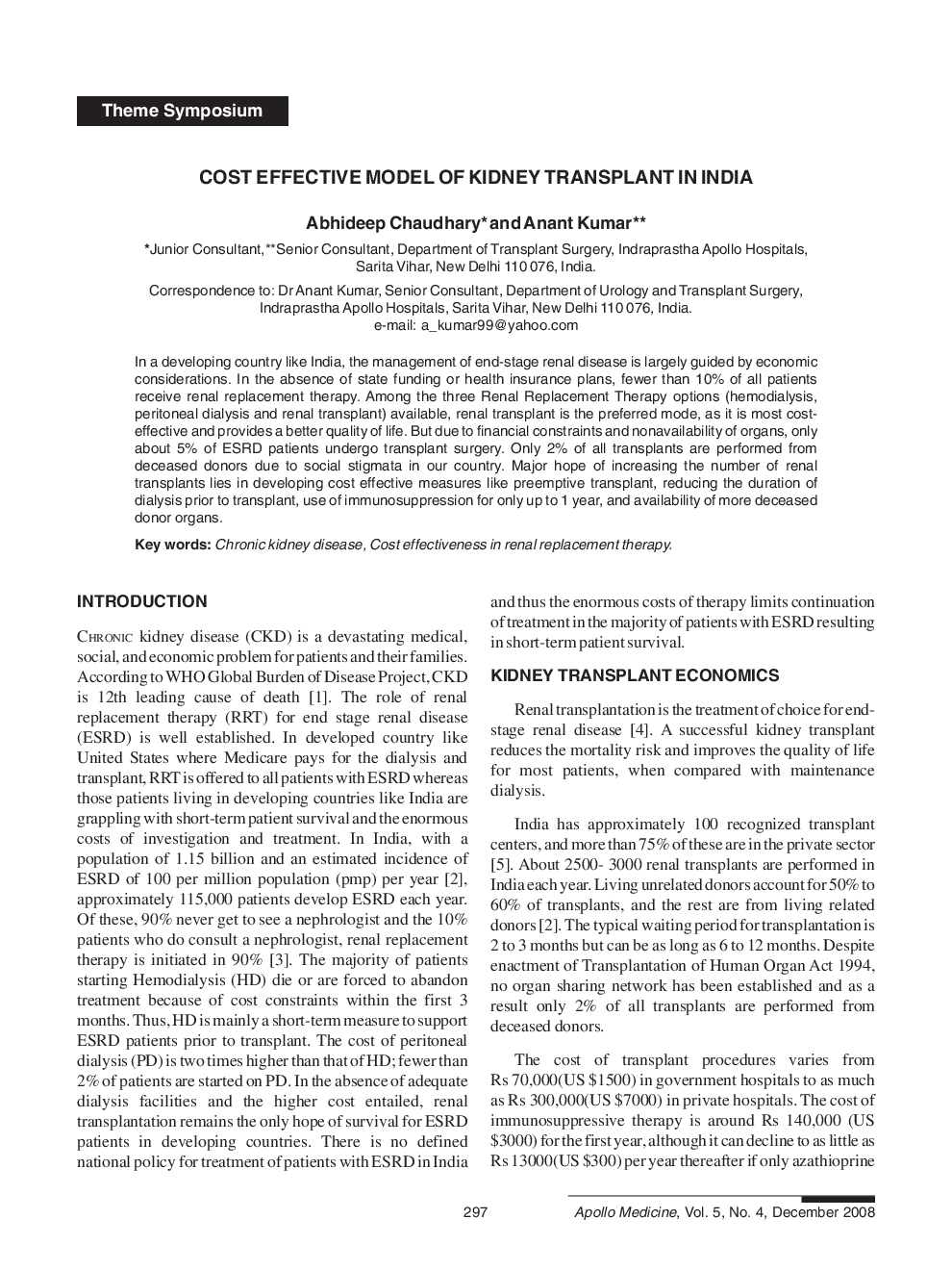| Article ID | Journal | Published Year | Pages | File Type |
|---|---|---|---|---|
| 3235175 | Apollo Medicine | 2008 | 4 Pages |
In a developing country like India, the management of end-stage renal disease is largely guided by economic considerations. In the absence of state funding or health insurance plans, fewer than 10% of all patients receive renal replacement therapy. Among the three Renal Replacement Therapy options (hemodialysis, peritoneal dialysis and renal transplant) available, renal transplant is the preferred mode, as it is most cost-effective and provides a better quality of life. But due to financial constraints and nonavailability of organs, only about 5% of ESRD patients undergo transplant surgery. Only 2% of all transplants are performed from deceased donors due to social stigmata in our country. Major hope of increasing the number of renal transplants lies in developing cost effective measures like preemptive transplant, reducing the duration of dialysis prior to transplant, use of immunosuppression for only up to 1 year, and availability of more deceased donor organs.
